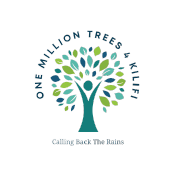
The Sabaki Estuary is situated at a distance of approximately 10 kilometers from the popular tourist destination, Malindi. It marks the end of Athi Galana, one of the longest rivers in Kenya, which flows for over 490 kilometers before emptying its waters into the Indian Ocean. The estuary is located near the Marafa Junction, leading to the famous Hell’s Kitchen. Its location is significant due to the diverse range of flora and fauna found in the area, which can only thrive in the unique blend of fresh and salty waters.

Despite its unique biodiversity, the region faces several challenges, mainly due to rapid deforestation. Unfortunately, the local community is not aware of the benefits of having mangroves. They perceive mangroves as ordinary trees, unaware that they support the estuary and its biodiversity. This lack of understanding is leading to rapid deforestation and poses a threat to over 240 birds, the hippopotamus and various fish species.
In the past decade, the mangrove has decreased by over 30% due to the cutting of trees by the local community. As they lack other means to make a living, they resort to selling mangroves as wood and posts. Mangrove wood is popular due to its durability, making it useful for fencing and building houses. However, this high demand is causing a significant threat to the remaining mangroves as it takes a long time for them to grow and regenerate. This is a pressing issue that needs immediate attention.


During our visit to Sabaki Estuary in February 2023, just a day before World Wetlands Day, we had a conversation with a local fisherman who used to catch fish in River Sabaki. It was disheartening to learn that the number of fish he caught five years ago had drastically reduced, making it difficult for him to earn a livelihood and support his family. As a result, he resorted to selling the mangroves and setting traps to catch the hippopotamuses that were destroying crops in the area. The farmers were unable to grow crops as the hippopotamuses, who previously had enough food in the mangroves, were now coming out and destroying their crops. This made the situation even more severe as the farmers couldn’t earn enough money to sustain their families. Therefore, they were forced to kill the hippopotamuses and sell the mangroves to make ends meet.


We appreciate the efforts of organizations like Sabaki River Conservation Friends, Gedeng Camp, Maono Space in conserving natural resources, specifically through mangrove restoration. However, it’s crucial to accelerate the restoration process to help restore the fauna and aura of the region to its original state. We as onemilliontrees4kilifi and other like-minded organisations are happy to join the restoration process and hope we’re taking the necessary steps to benefit the community through mangrove restoration. To further support this cause, we consider providing alternative ways for the community to make a living instead of resorting to cutting down and selling mangroves.
We are excited to announce that we have started planting 100,000 mangroves in at the Sabaki Estuary this year, to restore the green nature of Sabaki Estuary. We have noticed a significant reduction of mangroves on one side of the river, and we aim to bring balance to the ecosystem by planting on both sides. Our efforts are in collaboration with other organizations from MaonoSpace, and we hope to engage the community and schools in this initiative.


In addition, we are exploring partnerships with organizations that can donate beehives to 2000 farmers in the area. This will provide an alternative way of making a living for the farmers, and discourage them from cutting down the remaining mangroves. We believe that the restoration of mangroves will not only benefit the ecosystem but also increase the number of fish caught during fishing, providing more opportunities for the community to earn money.
We are also advocating for the importance of mangroves as carbon sinks, highlighting that one mangrove can take in 13 kilograms of carbon per year. We are educating the community on the vital role of mangroves as breeding grounds for fish, and the benefits of conserving and restoring them. To ensure that our efforts are successful, we are planning to have more scouts who will monitor the area and protect the mangroves from being cut down. We are committed to restoring the mangroves and preserving the ecosystem for future generations.
By planting 100,000 mangroves before the year ends, we can absorb 13 tons of carbon annually in the future. Additionally, the residents can increase the number of beehives by 40%, allowing them to produce more honey for the markets. Furthermore, planting mangroves will prevent the red siltation that is occurring on the riverbanks, protecting the mainland from ocean winds. Finally, planting mangroves will reduce the wild human conflict between hippopotamuses and community members by providing enough grazing space for the hippos, preventing them from destroying crops.


Sabaki Estuary is a remarkable bird-watching destination that boasts a variety of birds, including Flamingos and the greater Sandalink Sutigal, which have been migrating to other regions. By planting 100,000 mangroves at the Sabaki Estuary, we can restore the habitat and encourage these birds to return. This will not only create a climate-resilient community but also attract more tourists to the Sabaki River, resulting in increased revenue from bird watching. Let’s work together to make the Sabaki Estuary the vibrant place it once was.





This a very good initiative.taking part in environment conservation has always been of a great impact into our day to day life